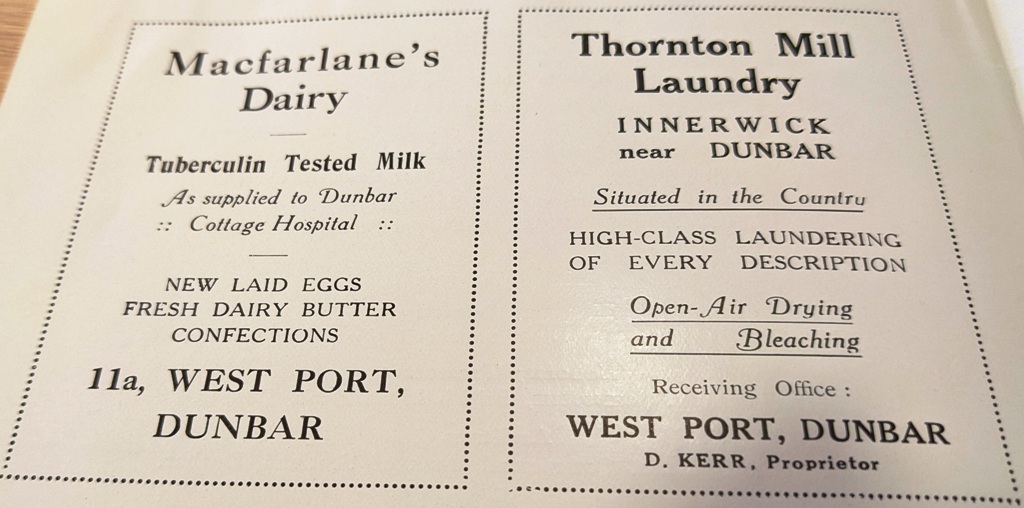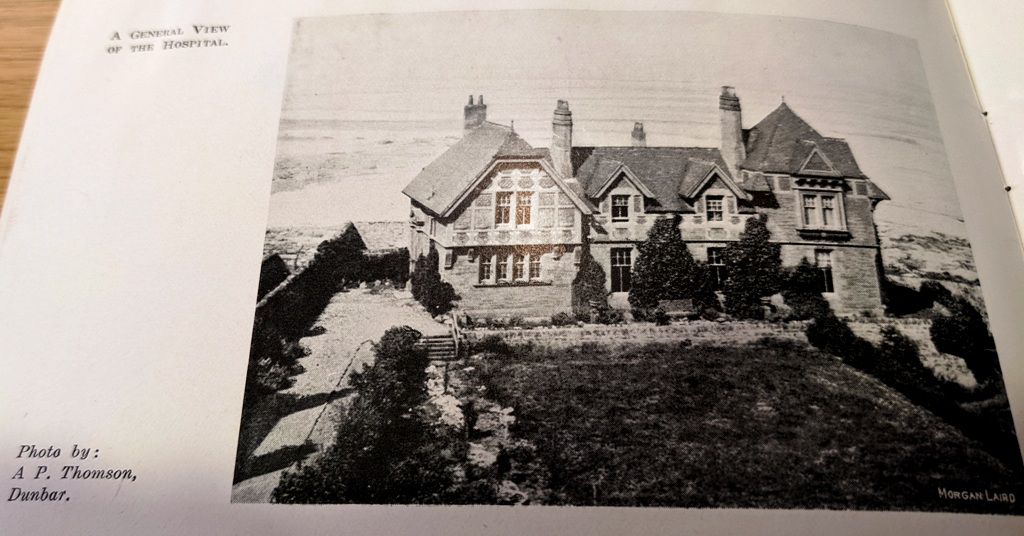More on the cottage hospital in Dunbar this month. We are fortunate to have the booklet produced by the hospital in the early 1930s and below are three more photos from that booklet.
Photo by A P Thomson (Click on all photos to enlarge – recommended)
The photo above – best enlarged – shows Yorke Lodge, which was adapted to become the cottage hospital in 1927. The booklet notes that the hospital at the battery, which became the cottage hospital after WW1, became inadequate and a new site was sought. The booklet continues “In order to raise the necessary funds, a Fete and Sale was held at Broxmouth Park, by kind permission of Mr. – now Sir – William Burrell, when the sum of over £2000 was raised. This sum was used by the managers to acquire the property known as Yorke Lodge”. Today, the sum raised would be a staggering £130,256, so presumably the fete and sale included perhaps an auction for the local wealthy, in order to raise such an amount. The booklet describes Yorke Lodge as “a well-built house, situated in a sunny position near the sea and surrounded by large gardens”.

The photo above shows the operating theatre, looking very clean, spick and span. Unlike today’s NHS hospitals, the Dunbar cottage hospital had an honorary surgeon. The booklet has a list of staff and Mr James M. Graham Ch.M., F.R.C.S.E., 8 Manor Place, Edinburgh is listed as this person. There was also an Honorary Gynaecologist and an Honorary Aural Surgeon. Jim Herring’s research into the hospital archives at Edinburgh University Library tells us that at a meeting of the House Committee in the council chambers in September 1928, the honorary surgeon suggested that the hospital set up an Instruments Fund, as he had to bring his own instruments at present. This shows how the hospital was dependent not only on donations from various sources, but also on the generosity of the honorary staff. A Management Committee meeting in November 1928, reported that a cheque for £200 from Miss Binnie, 3 Bowmont, had been received “for the purpose of defraying the costs of the instruments”. This is equivalent to £13,387 today, so generous donation.

The photo above shows another advert from the booklet. This time it is two West Port businesses. On the left, the dairy is advertising tuberculin tested milk. This site states that in 1923, a special parliamentary order was issued and that “The Order graded milk: tuberculin tested milk was labelled Grade A (TT). It differed from other milk in Grade A, which was regulated by the Ministry of Health, by its reliance on tuberculin and the different bacteriological threshold adopted”. The danger to the population from bovine tuberculosis was taken very seriously. The second advert refers to the laundry at Thornton Mill. The 4th Statistical Account of East Lothian refers to the valuation roll for Innerwick in 1945 and includes at Thornton Mill “Laundry, house, garden and wooden house all owned by David Kerr”, so the laundry was still in operation 15 years after the booklet’s publication. This Canmore site refers to “This building, which stands on the Thornton Burn 550 yards E of Crowhill, was originally an corn mill, then a steam laundry, and is now [1976] a knitwear factory”. It is interesting that. open air drying is included in the advert – weather dependent, presumably.

You must be logged in to post a comment.